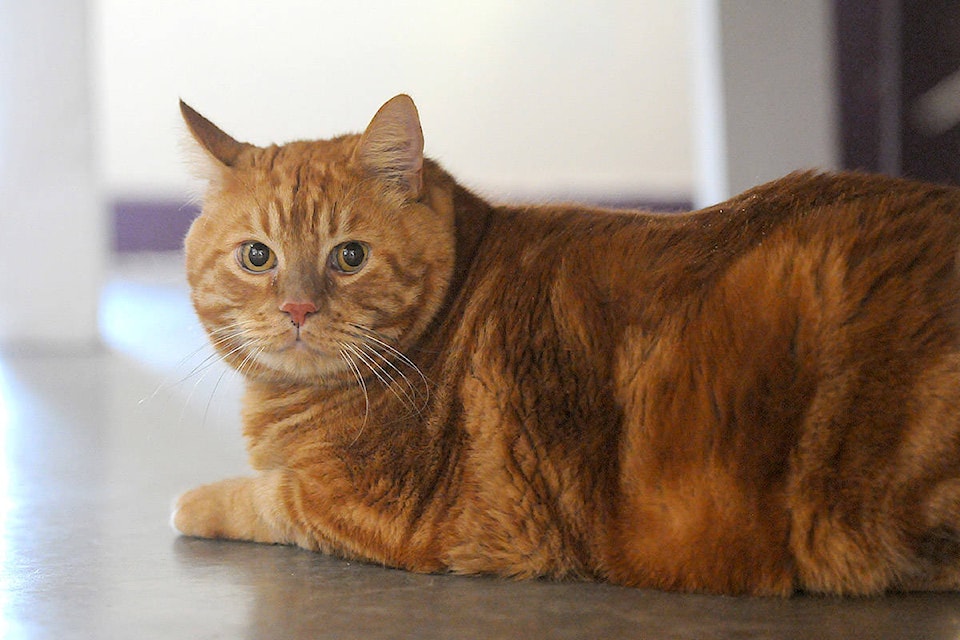By Natalie Asaro, MSc, Companion Animal Nutritionist, Petcurean
Many pets in North America are overweight or obese.
In fact, more than half of all the adult dogs seen at the 1,000-plus Banfield Pet Hospital locations nationwide were considered overweight or obese, according to the hospital’s 2020 Veterinary Emerging Topics (VET) report.
When pets become overweight, it places them at greater risk for heart disease, respiratory problems, diabetes and more. This is why it is important to manage your pet’s weight to keep them happy, healthy and thriving.
October is Pet Wellness Month and Wednesday, Oct. 14 is National Pet Obesity Awareness Day, which is a great reminder to stop and think about what we can do to help our pets maintain a healthy weight. Whether they are overweight, underweight or at the optimal weight, there’s a lot we can do to help them live long and healthy lives.
To figure out if your pet is a healthy weight, look for a proportioned, slightly hourglass body shape when viewed from above, a slight tummy tuck and a thin covering of body fat over the ribs and spine. When running your hands along their body, you should be able to feel the ribs and hips without pressing hard. If you’re not sure, you can use a body score chart like this one for dogs, or this one for cats.
RELATED: Wanda, a severely overweight cat, sheds 10 pounds with help from B.C. vet
If they need to drop a few pounds, here’s what you need to do:
Step 1: Determine your pet’s current weight
Your vet can be a great resource in getting started. In addition to weighing your pet, they can check to make sure that there are no underlying health issues at play.
But if you’re not able to see your vet right now, you can also get started at home. Simply weigh yourself on your bathroom scale. Then pick up your pet and weigh again. Subtract the difference to determine your pet’s weight.
Step 2: Increase exercise and play time
Activity and exercise are some of the biggest factors to address if your pet is overweight. It’s entirely possible you’re feeding your them correctly, but just not providing enough exercise.
Start the process of weight loss by adding an extra block to your regular walking route and a few more minutes of fetch in the yard. If you have an indoor cat, you can also invest in some new toys or a scratching post help them get more active. But whatever you do, it’s important to ramp things up gradually to avoid undue strain.
Step 3: Determine the correct amount to feed
If your pet only needs to lose a little weight, you can stick with their current food and reduce the amount you are feeding slightly. Rather than measuring the amount of food by volume, we recommend weighing your pet’s food using a kitchen scale. If more needs to be lost, you may want to consider a lower fat food to reduce calories while still keeping your pet satisfied.
You can also replace unhealthy treats with something from your fridge, like a carrot for dogs or piece of chicken for your cat.
Ideally, your pet’s food should be weighed, not measured by volume. Weighing is more accurate and allows you to monitor exactly how much you are feeding. It’s also a good idea to schedule a regular meal-time with your pet, rather than leaving their food out all day.
Step 4: Monitor progress
After a week, weigh your pet as described above. After a few weeks, you should start seeing progress. A one- to two-per cent body weight loss per week should be your goal. Anything more than this can be harmful to your pet. Ensure you conduct weigh-ins each week to help you stay on track.
If too much or too little has been lost during the previous week, adjust the amount of food again until a slow and steady weight loss is achieved. You can also build in more exercise gradually.
Continue adjusting food intake and weighing your pet each week until they reach an ideal body weight. It is also a good idea to use a journal or an app to keep track. The small weight loss changes from week to week can be hard to remember.
Step 5 – Don’t return to bad habits
Once your pet has reached their optimal weight, it’s important to maintain the healthy behaviours that got them there. Pets that have been overweight once are more likely to become overweight again.
Be sure to avoid returning to the old bad habits of too little exercise and too much food. Resist the urge to feed table scraps and stick with low calorie treats.
So, why not take a few minutes this October to do a weight check in with your pet? By making a few small changes, working together and keeping track, you will not only manage your pet’s weight in the short term, you can also ensure cuddles and companionship for many years to come.
About the author:
Natalie Asaro received both her BSc in Honours Biological Science and MSc in Companion Animal Nutrition from the University of Guelph. Her MSc research focused on investigating energy and macronutrient metabolism in cats, resulting in multiple published peer-reviewed papers. Her passion lies in pet food formulation and keeping up to date with research in pet nutrition. She is currently a Companion Animal Nutritionist at Petcurean, a Canadian premium pet food manufacturer.
RELATED: Chilliwack pet food producer offers six essential pet safety tips
